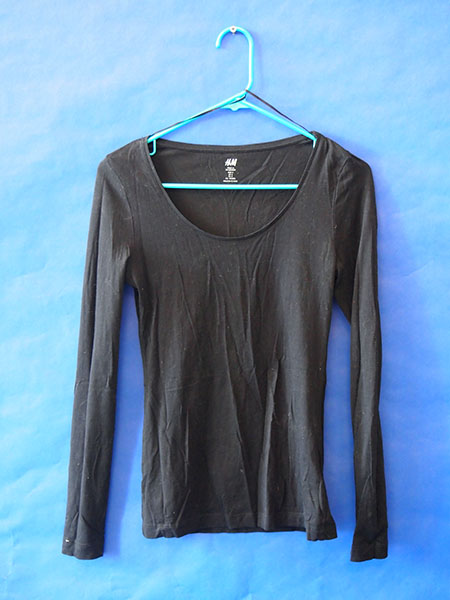![]() body | color | collections | commodity | cube | document | fabric | fetish | gender | glass | home | identity | living | machine | metal | minimal | mobility | narrative | olfactory | organic |
body | color | collections | commodity | cube | document | fabric | fetish | gender | glass | home | identity | living | machine | metal | minimal | mobility | narrative | olfactory | organic |
![]() pain | paper | plastic | plugs | power | protective | rectangular | ritual | round | sound | souvenir | spiritual | style | text-based | time | tool | touch | uniform | value | visual | warm | wood
pain | paper | plastic | plugs | power | protective | rectangular | ritual | round | sound | souvenir | spiritual | style | text-based | time | tool | touch | uniform | value | visual | warm | wood
| Clothing: Black Scooped Neck Long Sleeved Shirt | |||
Narrative: H&M; Black scooped neck long sleeved shirt; Small; Made in Bangladesh H&M's supply chain consists of Factory Employees, Second-tier Suppliers, Suppliers, Shippers, Auditors, Merchandisers, and Buyers. Cotton is farmed and picked in India, China, and Turkey Clothing design and samples made in Stockholm, Sweden where the headquarters are located. Dying mills and water supply near the Yangtze River in China. Washed and cleaned with water from the Brahmaputra River in Assam. Made and manufactured in Dhaka, Bangladesh; Bangkok, Thailand; Bangalore, Karnataka, India; Bandung, Indonesia; among others. H&M clothing labels and tags are printed in Stockholm, Sweden (approved by the EU Ecolabel Company). Papers are made from Forest Stewardship Council trees (FSC certified). Final products are sent to Hamburg, Germany where they are distributed to store locations. In a recent study commissioned by Greenpeace International, several major clothing brands including H&M were found guilty of using nonylphenol ethoxylates (NPEs) in the manufacturing process. This chemical breaks down into toxic nonylphenol (NP), which has hormone-disrupting properties that persist over time and can be hazardous even at low levels.
|
 |
||
![]()
